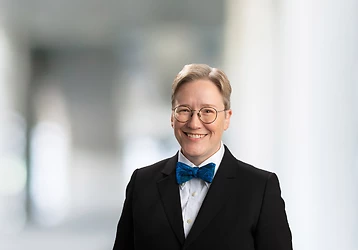Good News and Bad News from the FCC
The Federal Communications Commission (FCC) at its monthly meeting on July 13th adopted an order that provides some good news and some bad news for the automotive industry. Starting with the good news, the FCC expanded the spectrum that is available for vehicular radars that can be used for a wide variety of safety and convenience features, including collision avoidance, adaptive cruise control, blind spot warnings, assisted parking and pedestrian detection. The FCC increased the current 76-77 GHz spectrum allocation to include the entire 76-81 GHz band, and provided for a transition from the 24 GHz band spectrum now used for vehicular radars. The additional spectrum in the 76-81 GHz band will allow vehicular radars to better distinguish between objects in areas close to the car. In addition, the newly allocated spectrum is aligned with frequencies used in other countries, thus ensuring global harmonization and increased economies of scale. In more good news for the automotive sector, at the Press Conference following the FCC meeting, the Chief of the FCC’s Office of Engineering and Technology clarified that the transition out of the 24 GHz band will allow auto manufacturers to continue to repair or replace 24 GHz radars for cars currently equipped with that technology for the life of those cars.
Unfortunately, not all of the news from that decision is good. One of the FCC Commissioners issued a separate statement in support of the decision to allocate the additional spectrum for vehicular radars, but having some ominous overtones with regard to a separate FCC proceeding concerning the allocation of spectrum for vehicle-to-vehicle (V2V) communications. The FCC is considering allowing that Dedicated Short Range Communications (DSRC) spectrum in the 5.850-5.925 GHz band to be shared by other unlicensed users, such as WiFi. The FCC proceeding remains open, and the record reflects a wide divergence of views on whether sharing between DSRC and unlicensed services can be achieved without jeopardizing critical V2V services. Two competing models for any such sharing have emerged. The “detect and avoid” approach (advocated by Cisco) is based on the unlicensed service detecting the presence of DSRC signals throughout the 75 MHz band, and avoiding using the spectrum when DSRC signals are present. The “re-channelization” approach (advocated by Qualcomm) involves moving all safety-related DSRC communications to the upper 30 MHz of the band, and allowing unlicensed devices to share the lower 45 MHz of the band with non-safety DSRC communications. The wording of Commissioner O’Rielly statement in the vehicular radar proceeding suggests that he is supportive of the Qualcomm re-channelization approach:
When I hear of these benefits, I get an odd sense of déjà vu. Several of these safety solutions are exactly the same or similar to those championed as reasons for DSRC. As I have said before, it is necessary to determine exactly what safety systems will be provided using DSRC and whether they can be provided using other technologies, including the very technology we consider today. Dedicated DSRC spectrum should not be used to provide safety functionalities – or any services for that matter – that can be offered using radars and other technologies being used or in the planning stages as we generally move towards more autonomous cars.
Limiting use of the 5.9 GHz spectrum for only safety solutions that cannot be otherwise provided elsewhere would ensure that, at a minimum, unlicensed users can share spectrum with DSRC without causing harmful interference. We may even find that the purported benefits of DSRC no longer hold up, but that will have to be a discussion for another day.
Commissioner O’Rielly is clearly a skeptic when it comes to DSRC. And there are opportunities to convince him, and the other FCC Commissioners, of the benefits of DSRC. But the automotive industry cannot be complacent with regard to DSRC simply because NHTSA has proposed to mandate its deployment as a Federal Motor Vehicle Safety Standard. The FCC will decide how much spectrum remains available for DSRC, and whether and in what manner other services will be allowed to share that spectrum.
Stephen L. Goodman
202.454.2851
goodman@butzel.com
Jennifer Dukarski
734.213.3427
dukarski@butzel.com











